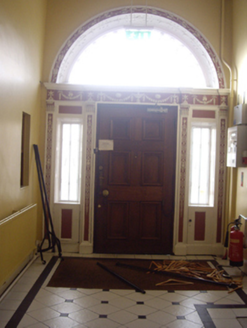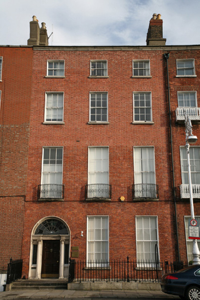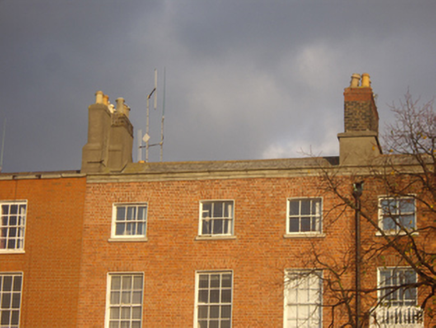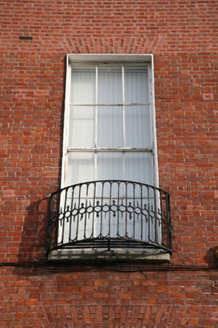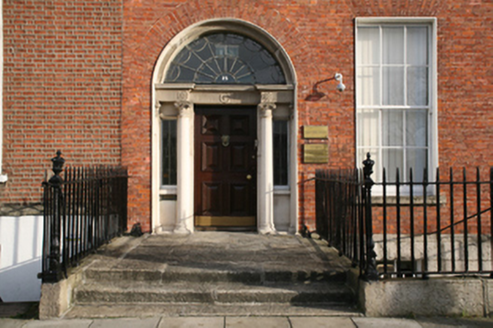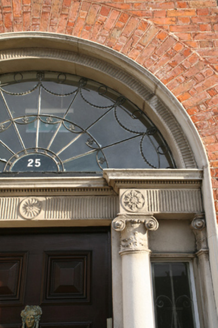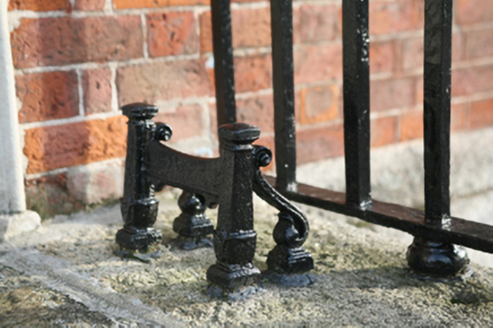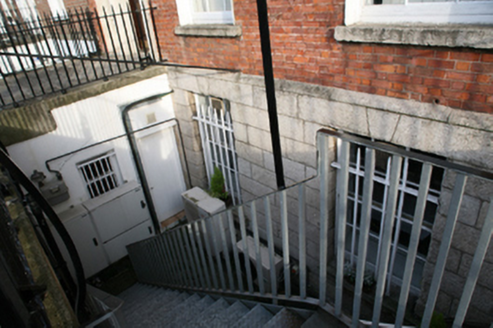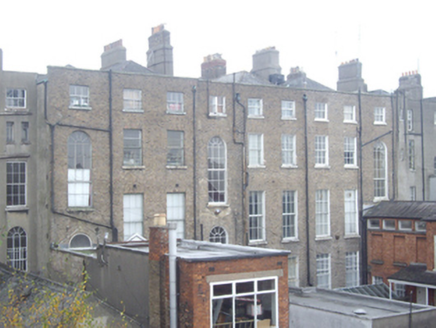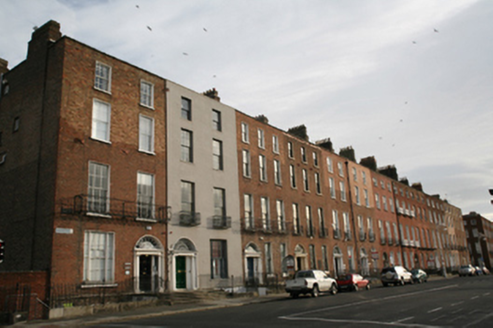Survey Data
Reg No
50011045
Rating
Regional
Categories of Special Interest
Architectural, Artistic
Original Use
House
Historical Use
Dormitory building
In Use As
Office
Date
1795 - 1800
Coordinates
316146, 235487
Date Recorded
16/11/2011
Date Updated
--/--/--
Description
Terraced three-bay four-storey house over exposed basement, built, c.1796, with six-bay two-storey over basement brick-walled rear return. Built as one of three houses to centre of terrace lining east side of Mountjoy Square. Now in commercial use. Double-pile artificial slate roof, pitched to front pile with pair of hipped roofs set perpendicular to rear. Stepped rendered brick chimneystacks with clay pots to both party walls. Roof hidden behind parapet wall with coved granite coping. Red brick walls laid in Flemish bond with original tuck pointing to moulded granite plinth course above granite ashlar basement walls. Yellow brick walling to rear elevation. Gauged brick flat-arched window openings with patent rendered reveals, granite sills and replacement timber sliding sash windows throughout, six-over-six pane to lower floors and three-over-three pane to top floor. Curved cast-iron balconettes to the first floor with wrought-iron grilles to basement windows. Round-headed stair light to rear elevation with replacement timber sliding sash nine-over-six pane window, spoked to upper sash, six-over-six pane to lower floors, and three-over-three pane to top floor. Gauged brick round-arched door opening with tripartite Portland stone doorcase. Replacement hardwood panelled door flanked by engaged Ionic columns on plinth bases, plain sidelights and responding quarter-engaged pilasters supporting stepped fluted and dentillated lintel cornice embellished with paterae and original leaded cobweb fanlight with fluted surround. Door opens onto granite platform with two cast-iron bootscrapers and three granite steps bridging basement. Platform and basement area enclosed by original wrought-iron railings and cast-iron corner posts on moulded granite plinth wall. Matching iron gate gives basement access via steel steps. Three cast-iron coal-hole covers set in granite kerbstones. Return has hipped slate roof, red brick walls, six-over-six pane timber sliding sash windows with iron grilles and lean-to ground floor canopy, and margined clerestorey and blind first floor windows to western half. Return abutted by recent flat-roofed three-storey rendered structure. Interior of house has decorative frieze to hall and elaborate interior to doorway comprising husk and other ornamental devices.
Appraisal
Mountjoy Square was built on lands formerly belonging to Saint Mary’s Abbey, laid out in 1790 by Luke Gardiner II and complete by 1818. No. 25 was built in 1798 by Frederick Darley as one of the three largest houses on the square. The house is almost identical to Nos. 26 and 27, containing elaborate timber joinery, fine neo-Classical plasterwork, a cantilevered stone staircase with wrought-iron balusters and a barrel-vaulted ceiling. The retention of timber sash throughout and of the stone and ironmongery detailing to the exterior contributes to the architectural heritage quality of the building. The rear return is of unusally high quality. Once the home of Jeremiah D’Olier, Lord Mayor, Governor of the Bank of Ireland and Treasurer of the Mountjoy Square Commissioners. The house is of considerable importance to the wider composition.
